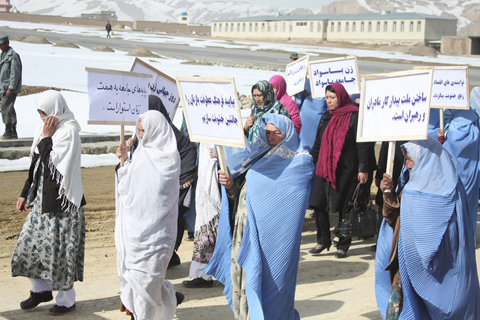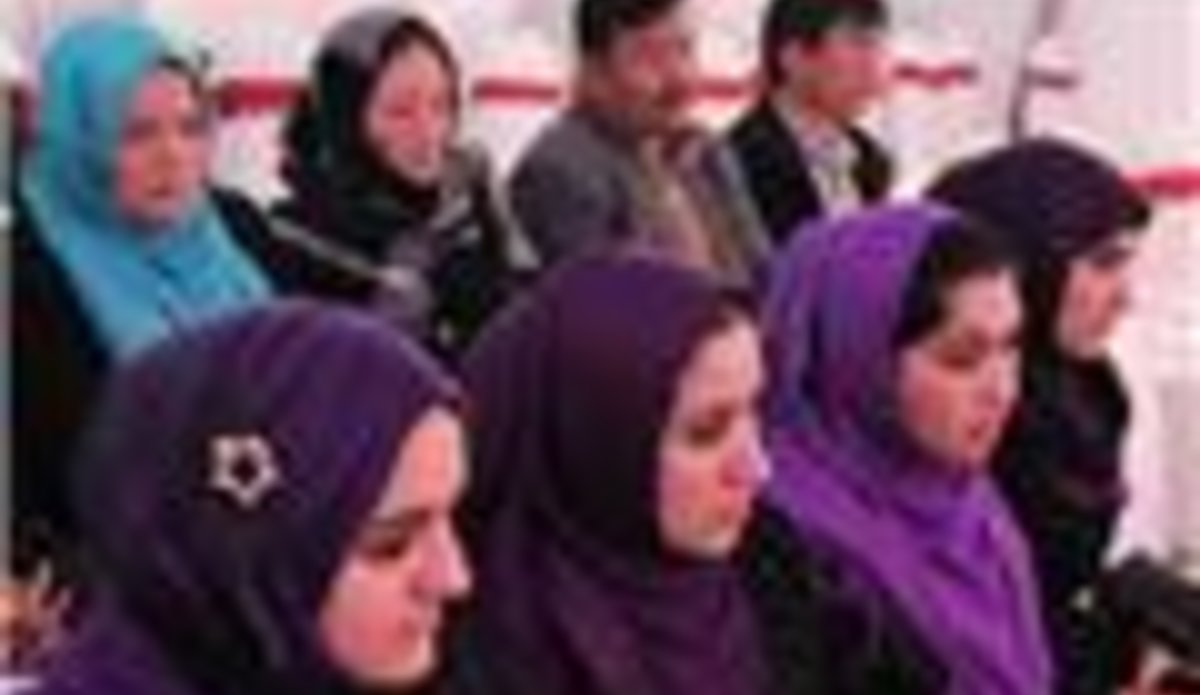Participation of women in various Afghan institutions
KABUL - The past dozen years have seen various watershed moments in terms of women’s empowerment in Afghanistan.
In the wake of the collapse of the Taliban regime in 2001, and despite ongoing challenges, they have played key roles in the evolution of Afghan society, such as in the political, social, economic and cultural fields.
Before 2001, women did not have the right to education, work and even movement without being escorted by a male relative. They were often victims of the worst forms of violence. The departure of the Taliban ushered in a new era of social and national transformation, helping set the ground for women’s empowerment and development.
The new Afghan constitution, adopted in January 2004, prohibits any form of discrimination against any Afghan national, and the Government of Afghanistan became a signatory to major international conventions which guarantee women’s rights. Some of these treaties include the International Covenant on Economic, Social and Cultural Rights, the International Convention on Civil and Political Rights, the Declaration of Elimination of Violence against Women and the Convention on the Elimination of All Forms of Discrimination against Women.
Now, over two million Afghan girls attend school, accounting for about 41 per cent of all school-going children. The maternal mortality rate has been reduced from 1,600 deaths per 100,000 live births in 2001 to 327 deaths per 100,000 live births. The Afghanistan National Development Strategy has termed gender equity as a cross-cutting theme that should be considered in all areas, including security, governance and social and economic development.
As the country marks International Women’s Day, which falls on 8 March, UNAMA highlights some of the achievements made in women’s participation in Afghan society, as well as some of the challenges.

Women in Government:
• Currently, three women serve at the rank of minister in the Cabinet of the Government of Afghanistan: the Minister for Public Health, Dr. Suraiya Dalil; the Minister for Women’s Affairs, Hussn Bano Ghazanfar; and the Minister for Labor, Social Affairs, Martyrs and Disabled, Amina Afzali. The Cabinet also has three female deputy ministers.
• According to the Ministry of Women’s Affairs (MoWA), although 22 per cent of government employees are women, only nine per cent are in decision-making positions. Women account for 1.3 per cent of the employees in the security sector, and 18 per cent on the health sector. There are also two women serving as governors at the provincial and district levels.
• According to the Central Statistical Organization (CSO), the Afghan Government has a total of 333,000 employees, out of which 41,000 are women, with 24,000 of them serving in the education sector.
• According to the Afghanistan Independent Human Right Commission, 27 per cent of government employees in Kabul are women, while in the provinces they account for 15 per cent of government employees.
• Out of 24 ministries and 11 independent state institutions, only five ministries have a gender strategy in place.
• In the education sector, more than 40 per cent of school students are girls and 30 per cent of school-teachers are women, while at the university level, 21 per cent of students are women and 15 per cent of their instructors there are women.
• According to MoWA, the number of girls attending schools increased by over 5,000 in the Afghan year of 1391 (2012-2013), compared to the previous year.
• In addition, a total of 1,699 non-governmental organisations are currently registered with the Afghan Government and 22 per cent of their employees are women.
Women in politics
• One woman ran as a candidate in the presidential elections of 2005 – the first time ever a woman had done so.
• According to Afghanistan’s Independent Election Commission, 41.5 per cent of the country’s women were registered to vote in the 2005 presidential election.
• In the last provincial council elections, held in 2009, women won 29 per cent (121 out of 420 seats) of council seats.
• Of the 41 candidates standing in the 2010 presidential election, two candidates were women.
• About 400 women contested the 2010 parliamentary election and 69 women were elected to the 249-member Lower House of Parliament (Wolesi Jirga). There are 28 women in the 102-member Upper House (Meshrano Jirga).
Women in the judiciary
• According to CSO figures, ten per cent of the Attorney-General’s Office employees are women, and out of 6,500 employees of the Supreme Court, 350 are women. However, there is no woman serving on the nine-member High Council – the most senior organization of Afghanistan’s Supreme Court – despite the fact that many religious scholars do not see any problem having women serve on this body.
By UNAMA Kabul
(The original version of this article appeared in the UNAMA Dari website)
 UN
UN






